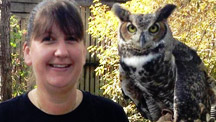Last week a Brown Pelican crashed into a car on the Pacific Coast Highway near Laguna Beach. Both bird and driver survived the crash. Later in town, three disoriented pelicans were found. All birds are thought to have been intoxicated by domoic acid, a by-product of pollution in coastal waters. At least sixteen other reports of bird drunkenness have been reported in the area. Read more in The Scotsman, WISTV and KSAT.
Oil Spill Off Wales Threatens Birds
“WILDLIFE experts raised fears yesterday of a “very serious threat” to birds and marine life after an oil spill off North Wales. A slick nine miles long and a mile wide, leaked from an abandoned sewage works, covered most of the length of the Menai Strait off Anglesey.” Source: Welsh oil spill a threat to birds
Dutch Researchers Find Dodo Skeleton
A Dutch research team has discovered a dodo skeleton on the island of Mauritius last week. The announcement came from the museum Naturalis, located in Leiden.
The research team’s goal is to document the environment of the dodo on Mauritius before Europeans came to the island. According to descriptions, the Portuguese came to the island about 500 years ago. In about 1600, the Dutch came to the island and began large-scale development and settlement. The last dodo bird was also seen in this period (1683)
So far the team has found near complete leg bone structures, along with skulls, wing- and breast-bones. The team still hopes to discover a complete skeleton. The research expedition will come to an end on 3 July.
Dead Swans Found In Amsterdam
On Sunday five dead swans were found in the Dommelskanaal in Amsterdam.
The Dutch animal protection group Dierenbescherming found an exhausted adult female swan along with four dead cygets. The mother swan was very weak and had to be put down by a veterinarian.
According to Dierenbescherming, the cygnets drowned when trying to flee from a fast-moving boat.
A sixth swan, the father of the family, was picked up by an animal ambulance on Sunday night.
Swallow Nests Removed From Dutch Locks
Construction on a lock in the Dutch city of Wijk bij Duurstede was able to continue this week after swallow nests in the lock were removed. Replacement of a lock door had been postponed last week with the discovery of the nests. When the nests were removed, 23 hatchlings were brought to a shelter.
Because the Barn Swallow is a protected species, the nests could only be removed after consultation with the Dutch Land and Nature Ministry. Swallow nest boxes have been placed around the lock to provide the birds with alternative nesting sites.
France Opposes Extra Space For Chickens
A group of EU countries, under the leadership of France, has blocked a proposed plan to increase the minimum living space for farm chickens. The group is concerned about EU farms competing with Brazilan chicken farmers.
The European Commission currently mandates a maximum of 38 kilos of chickens per square meter. The proposal, brought by Dutch PvdA party member Thijs Berman, was seeking a maximum of 34 kg of chickens per square meter by 2013.
Berman’s reacted with deep disappointment. According to Berman, today’s EU consumers prefer a meat from well-cared for chickens and even indicated that some Brazilian chickens today have more space than some EU chickens.
Germany, Great Britain and the Scandinavian countries back the proposal, but together they do not constitute enough votes against the French coalition.
Birds Return To Island After Rat Removal
Birds on an island off the north Devon coast are showing signs of recovery for the first time since 2003. Rats were culled from the island three years ago in an effort to help the Manx Shearwaters and puffins that used to breed there. The Royal Society for the Protection of Birds had said the cull was necessary because the rats decimated the bird populations by eating the eggs and chicks. Animal Aid did not agree with the plan, believing other factors besides the rats caused the decline in bird population. Read more in the article Signs of chicks after island cull on the BBC.
Bird Seen For First Time In 77 Years
A bird guide on the east coast of Australia had what is believed to be the first Beck’s Petrel sighting in 77 years. The guide managed to photograph the bird, according to Bird Life International.
The guide, Richard Baxter, was himself astonished to have taken what is believed to be the only photograph of the Beck’s Petrel. Baxter first believed the bird to be a more common bird, the Tahiti Petrel, but the size and coloration of the photographed bird has indicated the bird is the Beck’s.
The Beck’s Petrel is certainly rare, but Bird Life International lists the bird as threatened rather than extinct. The bird is known to nest on very remote atolls and islands, and the population is thought to be very small.
Thousands Of Belgian Pigeons Lost In Heat Wave
Flemish pigeon fanciers are mourning the loss of thousands of pigeons that took part in a flight originating from Noyon in France last Sunday. Temperatures in the area had reached the lower 30’s centigrade.
The fanciers estimate 12,000 birds are lost. Approximately 30,000 pigeons participated in the Noyon flight. It is believed the extreme heat is to blame.
EU Ministers Discuss Lifting Wild Bird Ban
EU veterinarians are meeting in Brussels today to discuss recommending the lifting of a temporary ban on importing wild birds. The ban was implemented during last year’s bird flu scare. The EU ban has nearly collapsed the wild bird trade in some parts of the world; Europe accounts for 93% of global avian trade following a similar ban in the U.S., implemented in 1992. Read the full story EU urged not to lift its ban on ‘cruel’ import of wild birds in the Independent.



